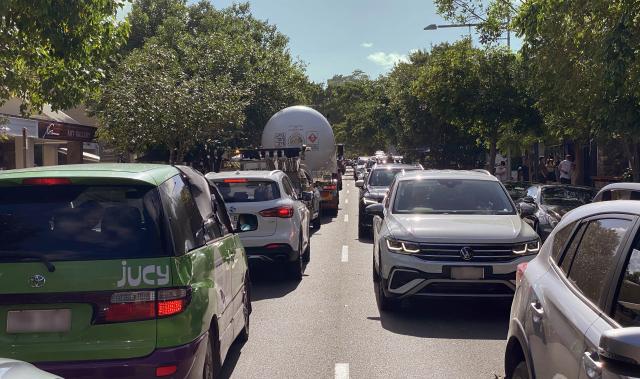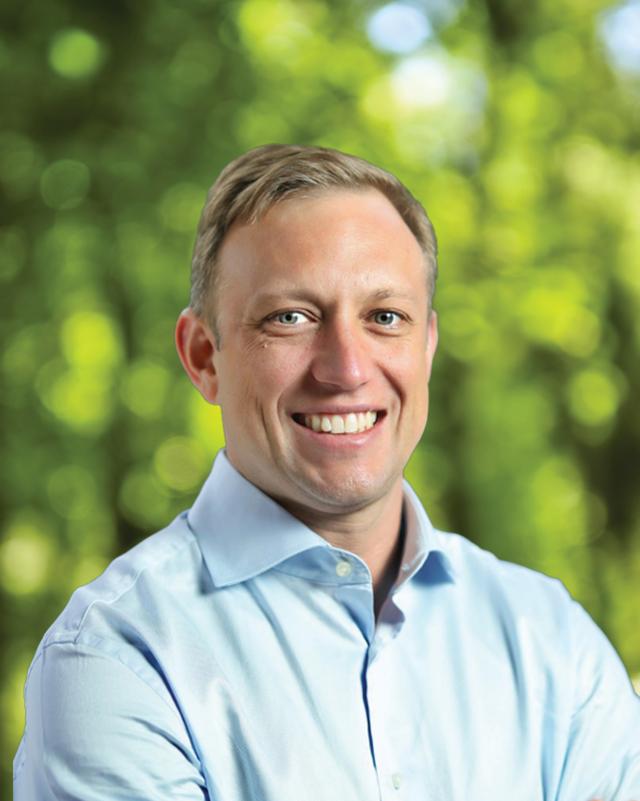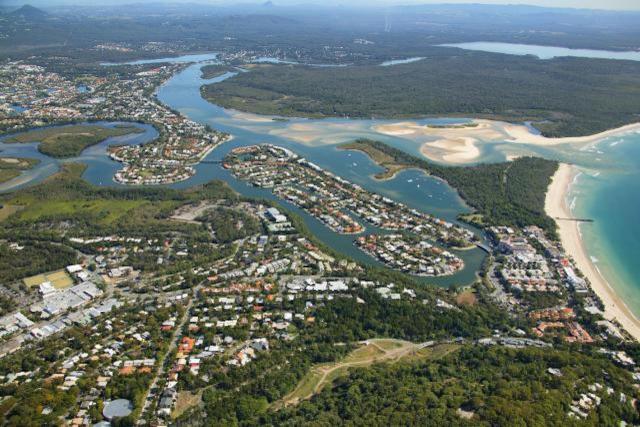Although it’s difficult to see how any plan to add 900,000 homes and 2.2 million new residents to South East Queensland over the next couple of decades is going to “unlock more of the Queensland we love”, this was the mantra chosen by new Premier Steven Miles to make us feel good about the finalised version of ShapingSEQ 2023, released last Friday.
This mammoth regional plan taking us to 2046 will take far longer to digest than Noosa Today deadlines have allowed for this edition, but in relation to Noosa, one of the first things that became evident over a lengthy scanning of the voluminous document is that it’s big on puffery but light on numbers. Having been warned in the draft plan release several months ago that the State’s projection for Noosa was 19,100 more residents by 2046, with almost half of them to arrive in the first three to five years, we could be forgiven for hunting through the pages looking and hoping for a massive backdown on that.
It’s not to be found in the body of the plan, however Noosa Today understands that based on supportive figures provided to Noosa Council, the net population increase has been peeled back to 18,800, with the five-year kickstart removed. That still blows the so-called population cap out of the water, but it seems to indicate that the Miles Government is willing to negotiate with councils to keep some semblance of order in their own planning schemes, to meet them somewhere on their own growth projections.
In a video response to the ramifications for Noosa, Mayor Stewart said: “Noosa Council advocated strongly over the draft version of this plan, as did members of the community … The plan as it stands today has been formalised by the State government. There are some wins in respect to secondary dwellings which are now considered part of the housing stock. What is of significant concern is that the numbers are much the same. We are expected to plan and provide for 18,800 more people with no commitment to infrastructure. Noosa Council will continue to advocate strongly for community and public infrastructure, public transport connectivity and all of the things we need a firm commitment from the State on. What also didn’t feature in the draft plan was the extension of the urban footprint in Cooroy, which is in regard to employment and not housing, but it’s a new addition. “
According to a statement released with the plan last Friday: “The new plan will mean more homes, faster and in locations where people can live more affordably with access to their daily needs … The plan underpins more affordable and well-located homes throughout South-East Queensland, as the region prepares for an additional 2.2 million people by 2046.
“The release follows months of consultation with SEQ communities, local governments and industry around strategies to deliver more affordable, well-located homes in the nation’s fastest growing region while also protecting our environment and lifestyle. Importantly included in the finalised plan is the commitment to 20 per cent social and affordable (both market and non-market) housing for new homes by 2046.
“The Plan has an increased focus on greater housing diversity – such as well-located units and townhouses – within established areas which are close to key services and infrastructure such as public transport. It also includes approximately 5,000 hectares added to the urban footprint for residential and employment purposes.
“ShapingSEQ 2023 also has a focus on ensuring an adequate supply of industrial and employment land to support jobs closer to where people live over the next decade. This will minimise travel times and prioritise infrastructure investment that supports growing up rather than out to protect our precious natural environment. And it includes a strong commitment to protecting the region’s environment and lifestyle including greening and cooling initiatives, tree canopy targets and protection of koala habitat.”
Launching ShapingSEQ Premier Miles said: “Queensland’s golden decade of growth means that we need more homes than ever before. ShapingSEQ is our response to the national housing supply challenge, ensuring we deliver more homes while preserving our region’s great lifestyle … It’s not just about more homes but making sure that it’s what South East Queenslanders want, strategically located to meet their needs, reduce costs and increase affordability. Growth will enable our region to build the infrastructure our communities need and increase housing supply and affordability, while protecting what we love about Queensland.”
Speaking in response, SEQ Council of Mayors chair and Brisbane Lord Mayor Adrian Schrinner said: “ShapingSEQ Regional Plan is a long-term housing strategy and it requires a strong infrastructure commitment to support it. It’s been pleasing to see the State strengthen land-use and transport planning, identifying the major infrastructure SEQ needs to sustainably accommodate population growth over the next 20 years. While the Regional Plan identifies the infrastructure we need to sustainably grow, it does not provide the funding, or a commitment to delivering this infrastructure ahead of this growth. It is a 20-year plan for 2.2 million new people and 900,000 new homes with a supporting infrastructure plan that only has four years of committed funding…
“The State’s regional plan sets ambitious housing targets for Councils without any clear strategy to address the significant barriers which are impacting the construction and building industry from delivering affordable product. Despite being told national immigration policy is fuelling growth, we’re yet to see any new commitments from the Federal Government to support it.
“The region needs 1 million new jobs, but we’re yet to see how the plan will maximise the performance of economic and employment centres and industrial land to attract these high-value jobs into the future. There are examples of misalignment with the vision of local planning outcomes, which have been developed with significant consultation and engagement with local communities.
“Councils remain a ready and willing partner to work with the State to support the region’s growth, but we’re extremely concerned we’re yet to see a long-term funding commitment to the infrastructure our region needs to grow sustainably.”
Turning to Noosa specifics within the plan, there aren’t many in the detailed section on the Northern Sub-region, which stretches from the Aura development south of Caloundra to the northern boundary of Noosa Shire, making it the third largest urban area of SEQ. ShapingSEQ says it “maintains a close relationship with its natural setting”, and is “characterised by a relaxed coastal and hinterland lifestyle supported by world-class beaches, waterways and hinterland areas; an urbanised coastal edge; historic inland urban settlements; and several eclectic and culturally rich hinterland townships.
“Nationally and internationally recognised natural assets including world-class hinterland areas; biodiversity including threatened species; scenic amenity areas including the Blackall Ranges, Glass House Mountains, Pumicestone Passage, Noosa River and the lakes system.”
In a section headed “Growth by Consolidation”, the plan outlines “the intent to use land and infrastructure efficiently to create a preferred growth pattern [which] will be achieved by focusing higher-density in select, but distinctive, locations across the Northern sub-region.
The high amenity areas framework sets out the criteria for identifying areas to be prioritised for further development. High amenity areas for the Northern sub-region will be further refined and spatially defined in collaboration with the Sunshine Coast Council and Noosa Shire Council with key locations including Maroochydore (City Centre), Kawana, Caloundra and Nambour regional activity centres which present opportunities for increased residential density…”
In a section called Potential Future Growth Areas, the plan states: “Although there are no other PFGAs identified in the Northern sub-region, Noosa Shire and Sunshine Coast councils are encouraged to investigate the potential additional longer-term urban growth opportunities, where compatible with those councils’ broader strategies for their long-term rural, environmental and landscape sustainability.”
Noting that “the intent to protect and nurture the regional biodiversity network and manage regional landscapes will be particularly relevant,” ShapingSEQ includes Noosa North Shore and Cooloola, the lakes, the Noosa Wallum Corridor, the Noosa Biosphere Reserve and the Noosa World Surfing Reserve on the protected list.
Under the heading “Our Great Places”, the plan also notes that man-made attractions such as the “iconic” Hastings Street precinct, “vibrant” Noosa Junction and the Gympie Terrace strip of riverfront park and restaurants would be sacrosanct.
These are promising signs but the major issue for Noosa residents is likely to be the deluge of daytrippers seeking relief from the overcrowded super-cities just to our south.
Noosa Parks Association spokesperson Michael Gloster told Noosa Today: “If we want to keep Noosa as a great place to live or visit, we now need to elect a Noosa Council strongly committed to two reforms: absorbing the impacts of more residents by reducing day trippers, and increasing accommodation availability to a larger resident population. The bottom line is that the next Noosa Council will need to deliver two things that the current Council has abjectly failed to deliver: winding back day tripper numbers and winding back short-stay accommodation numbers.”










